It’s been a while since my last post.
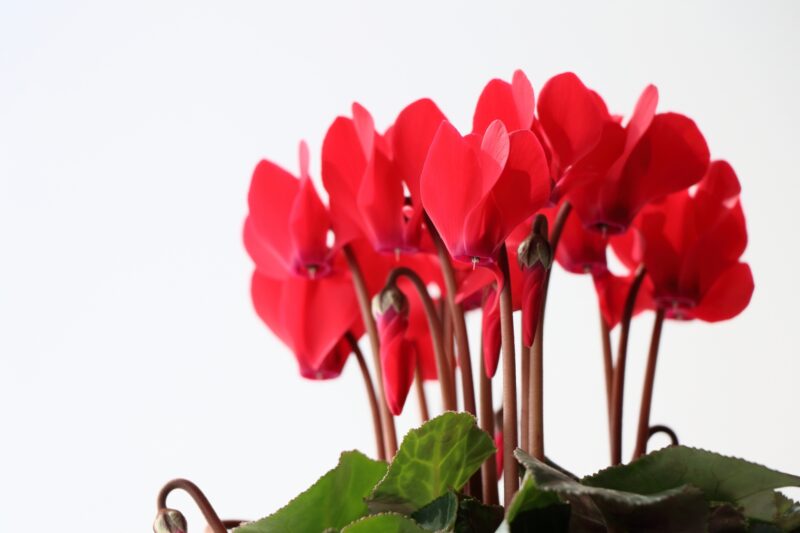
You must have an experience that you couldn’t help buying a beautiful potted plant when you were out shopping. But have you not ever had a trouble maintaining the beauty of the plant or disposing of the soil when it withers? If you live in a house with a big garden, you won’t have much trouble, but in an apartment, the only place you can enjoy gardening is on the balcony. It’s not easy.
Today I’m going to write about how to enjoy apartment gardening with a focus on gardening tools and soil management.
What to Prepare for Apartment Gardening
After you bought a potted plant, you can enjoy apartment gardening if you have the tools like these.
- Work gloves->Cotton types are not recommended because they are difficult to work with when wet, and they get through prickly objects. Work gloves with rubber guard as shown in picture below is useful. After use, it is easy to wash them with soap while wearing them. You can find them at 100 yen stores
- Picnic sheet->If you work on this, the balcony will not be muddy and cleanup will be easy. Newspaper is not recommended because the moisture from the soil will tear it.
- Shovel → A shovel from a 100 yen store is fine, but if you think you will be working on it several times, a slim one like the one in the picture below is useful for digging up roots.
- Gardening sieve → If possible, a large diameter sieve is easier to use, but if you are only replanting small pots, a small sieve is fine.
- Gardening scissors → It is useful to have one.
- Plant pot
- Potting net → Prevents soil from flowing and also prevents insects from entering through the bottom of the pot.
- Potting stones → Buy a small bag.
- Gardening soil -> Fertilizer and humus are mixed in.
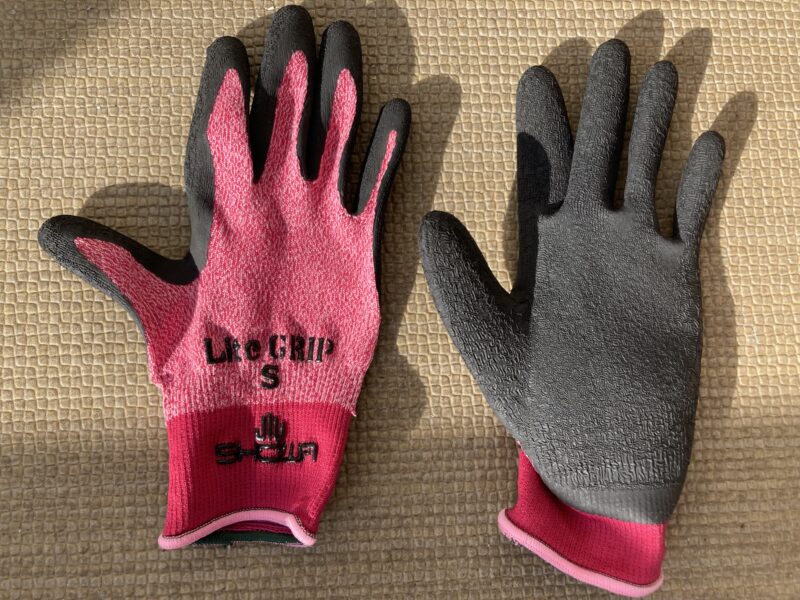
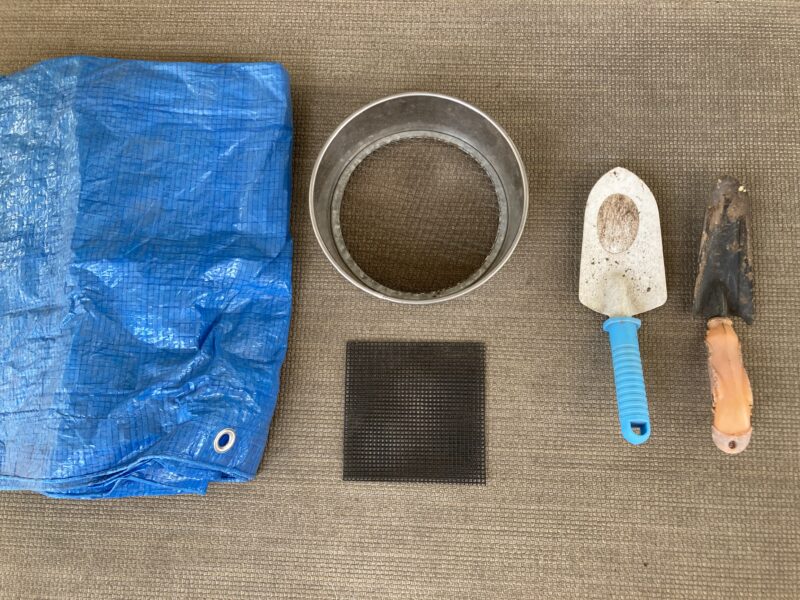
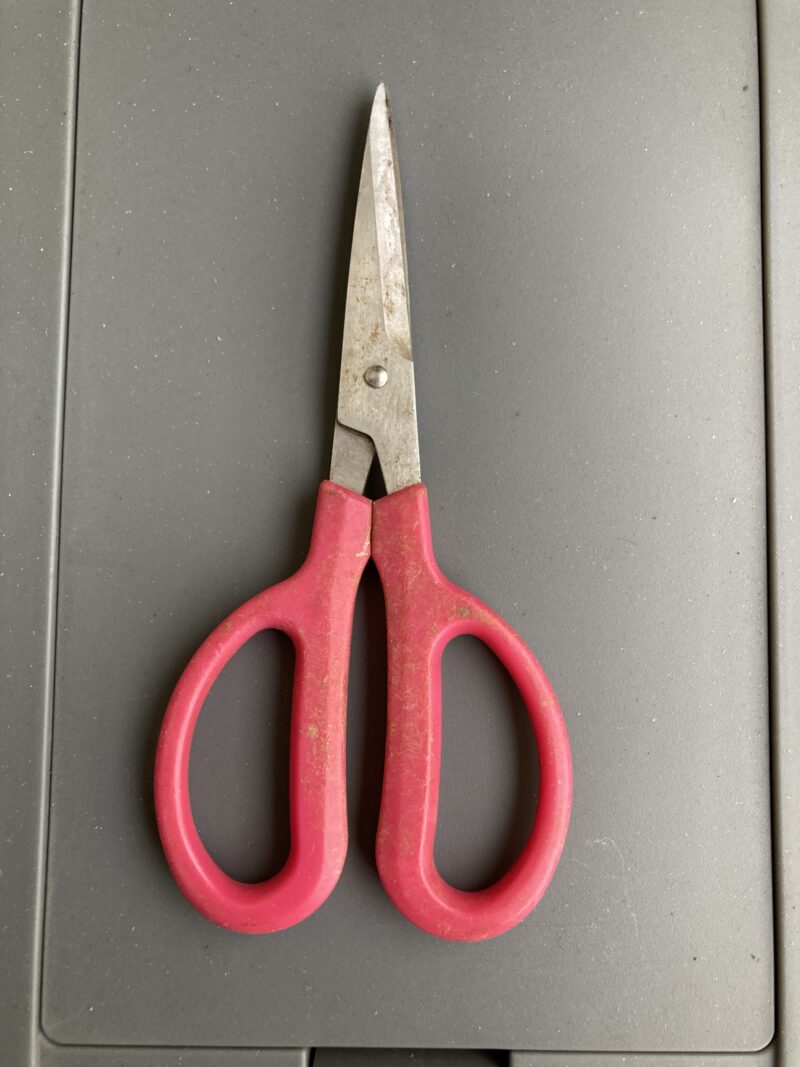
When you bought the seedlings…
First, take them out of their plastic pots and repot them.
If you leave it as it is, it will wither quickly due to poor ventilation.
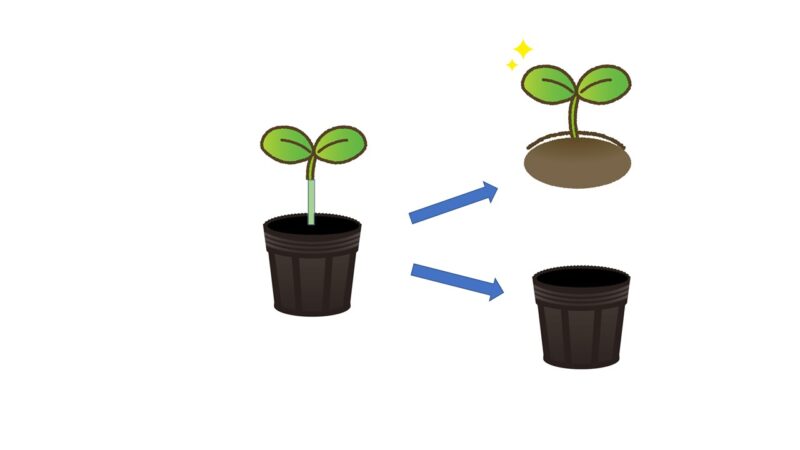
Plant them in a flowerpot of you like. It is not advisable to replant them with plastic pots.
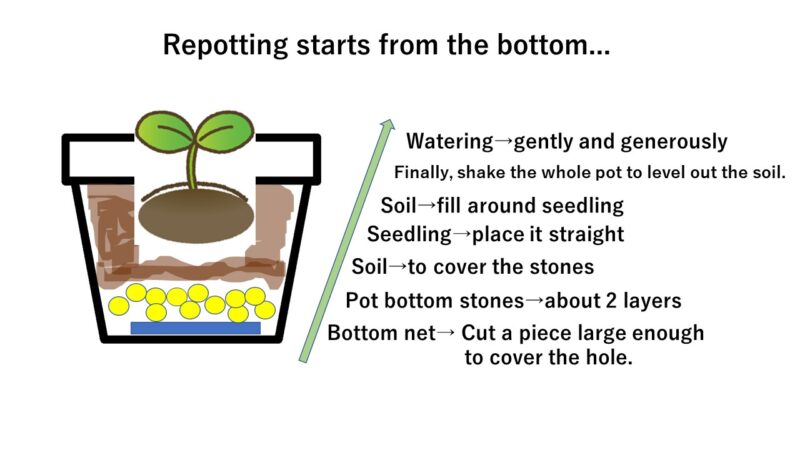
Done!
Managing potted plants on a balcony
Watering
Water when the soil is dry. In spring, water every day during the growing season. In summer, water twice a day in the morning and evening. In autumn, water less frequently, and in winter, once every two days is fine.
Pick the finished flowers
If you leave the finished flowers as they are, they will not look good and they will not breathe well, so check on them often and clean them up.
Move towards the sun.
The good thing about balcony gardening is that you can move the pots towards the sun. Since the sunlight changes along the seasons, you can move the pots to a sunnier spot. If you can’t move the pots, you can simply rotate the pots to give them more exposed to the sun and make them healthier.
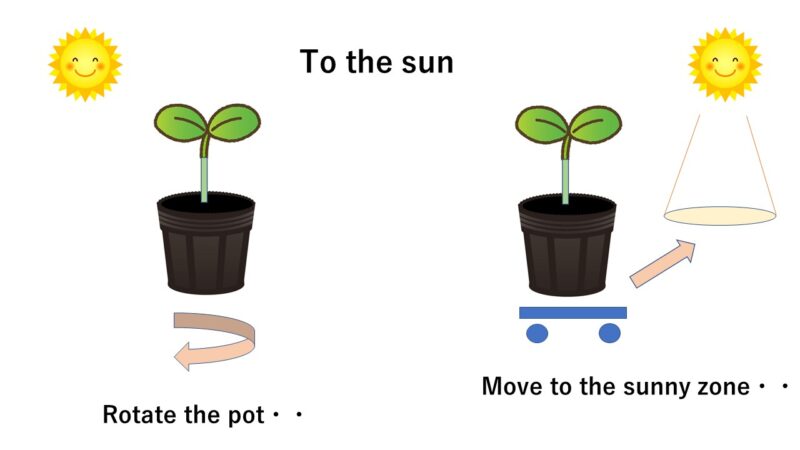
After the flowers…
Now, let’s get to the point.
Soil can’t be thrown away.
Many gardening beginners think that they can just throw away the potted plants when the flowers are finished. But soil cannot be thrown away as ordinary garbage! This is because it is considered as a natural product, not waste.
If you live in a detached house with a garden, you can simply sow them in the garden, but if you live in an apartment, it is not that easy. There is a way to have a contractor take them away for a fee, but if you don’t have that much, the best way is reclamation.
Reclamation is the process of separating plants and soil, disposing only the withered plants and reusing the soil.
Sieving and reusing
Here’s the point!
Work on the prepared picnic sheet. Remove the plants and flowers from the pots and separate them with a sieve as shown in the picture below.
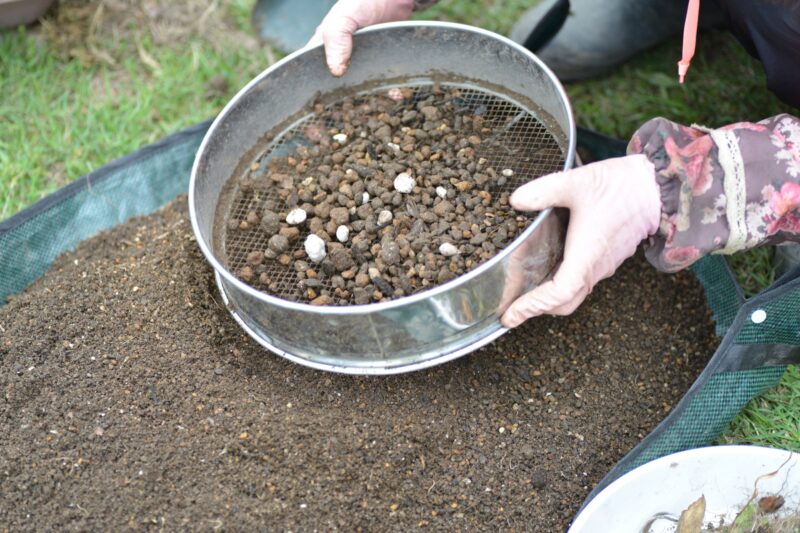

- Loosen and remove soil entangled in the roots with your fingers.
- Trim off the beard roots that have grown out a lot to allow for better air flow.
- The soil (the soil that fell on the picnic sheet) can be reused, but it would be much better if you mixed with humus or AKADAMA soil.
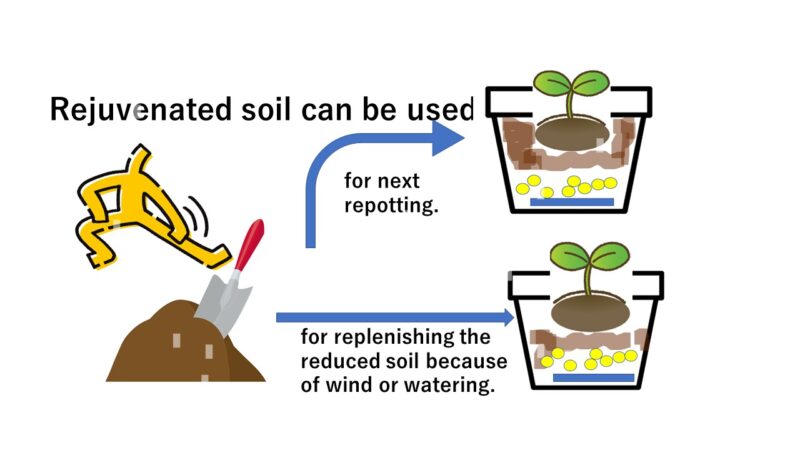
If the roots of perennial plants are still alive, they are sure to bloom again next year if they are repotted. (Cyclamen, lilies, roses, etc.)
Annual plants such as pansies produce seeds after they finish flowering. This year’s flowers will last only one year, but if you are good at collecting the seeds, they will bloom again when you sow them next year.
So even your potted flowers end up like these…
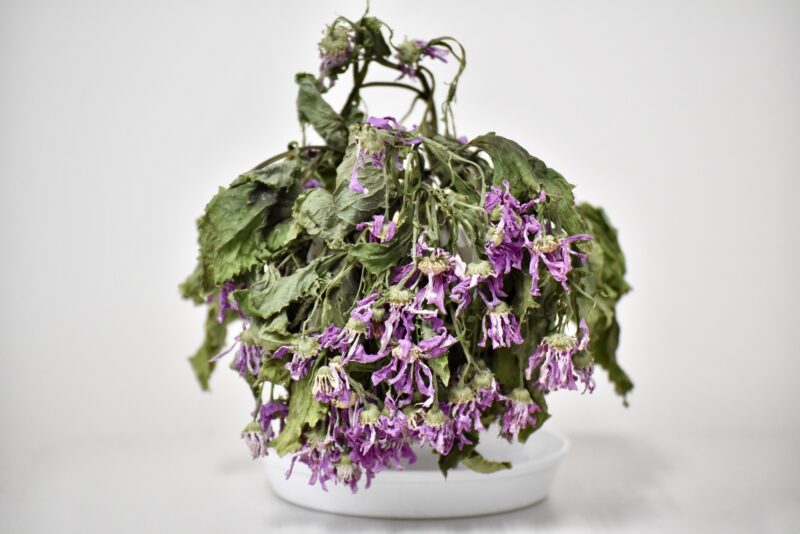
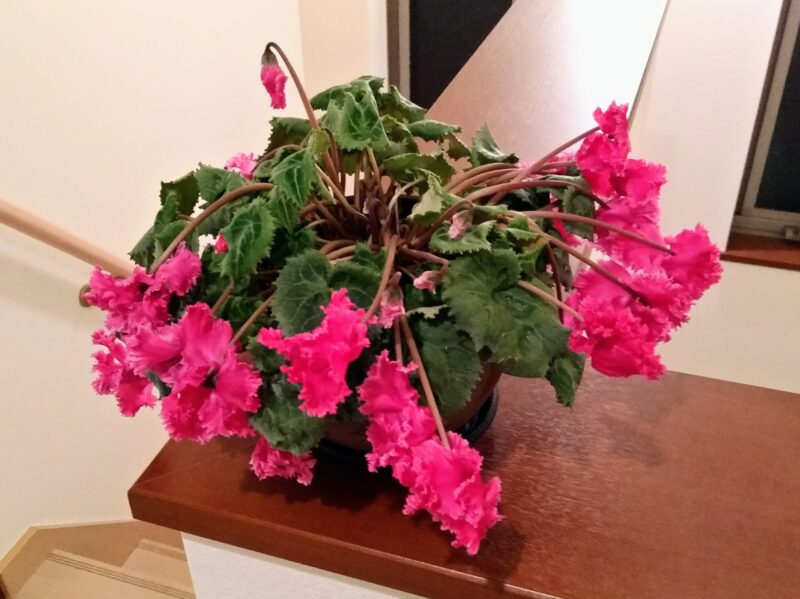
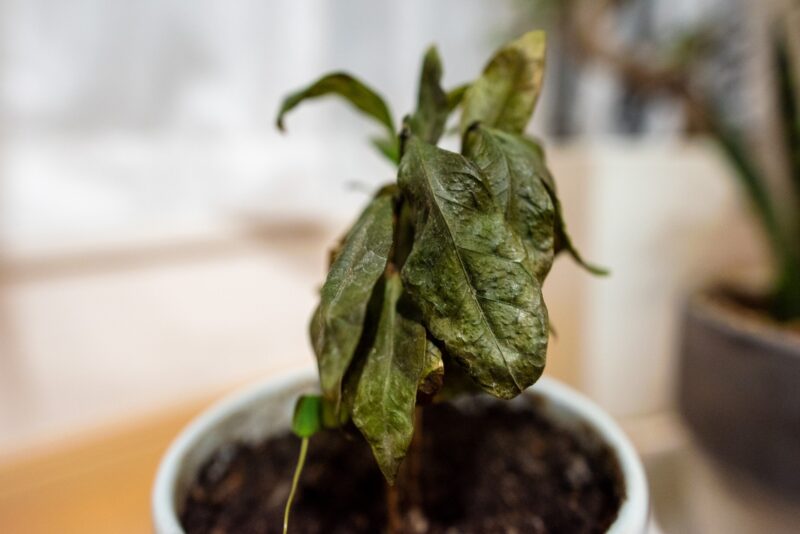
Don’t give up. Before throwing them away, remove the dead parts and wait patiently to see if the roots are still alive.
It is a great joy to see young sprouts appear when you forget about them.
How to manage gardening tools and soil
I’ve finally gotten to the point. This blog wasn’t about gardening, it was about organizing and storing, how to neatly store all the gardening stuff!
The best is to use up the soil you have, but that’s not always possible. The problem is where to keep the leftover or recycled soil.
I use one trash can for gardening.
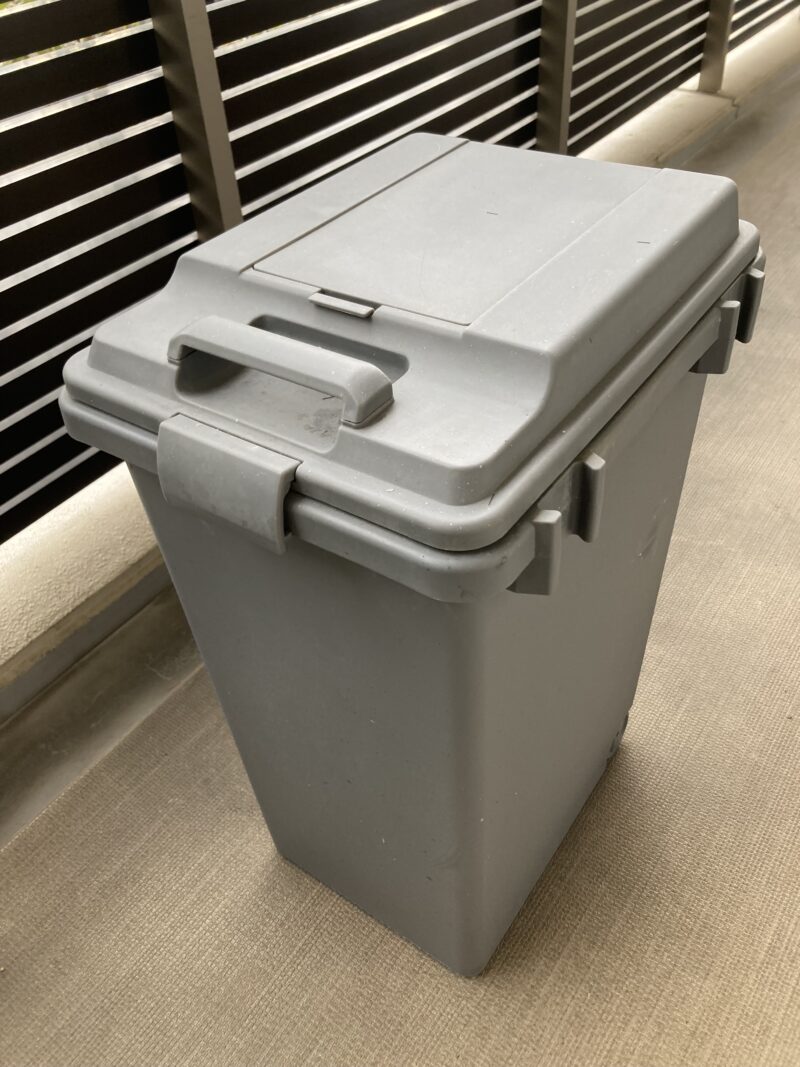
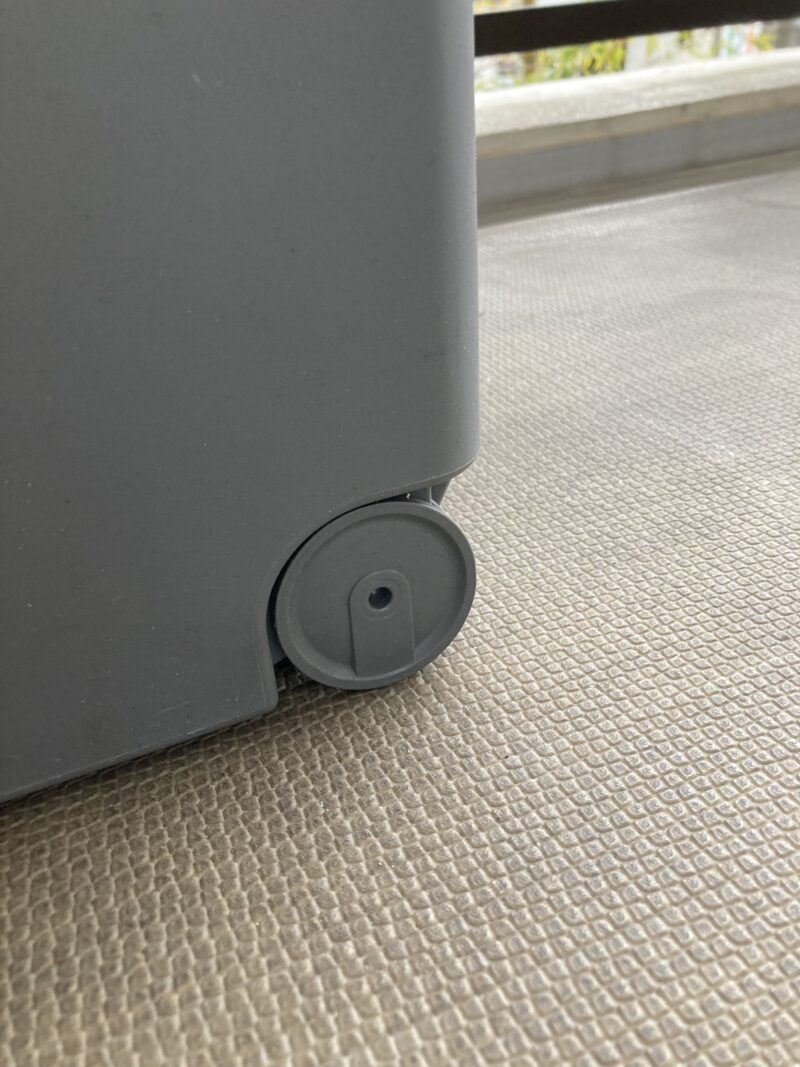

If you put soil in a trash can as it is, it would be difficult to handle, so divide the soil into small plastic bags and take out only as much as you need on the picnic sheet. I then put my gardening tools on top of it, so one trash can becomes a dedicated gardening tool container.
The size of the trash can can be determined according to the size of the balcony. If you think you would often do repotting, you can choose a big one. If not, choose a minimum size that fits to your place. In any case, a trash can with wheels is recommended, as soil is heavier than you imagine. A cardboard box is susceptible to moisture and may tear, but a plastic trash is strong and looks better.
If you can keep and orgqanize soil and the tools properly, balcony gardening will definitely be more fun!
Lastly, as a point of advice, it would be comfortable to have a used bath chair for sitting and working or a wash basin for sorting things.
Have a fun!
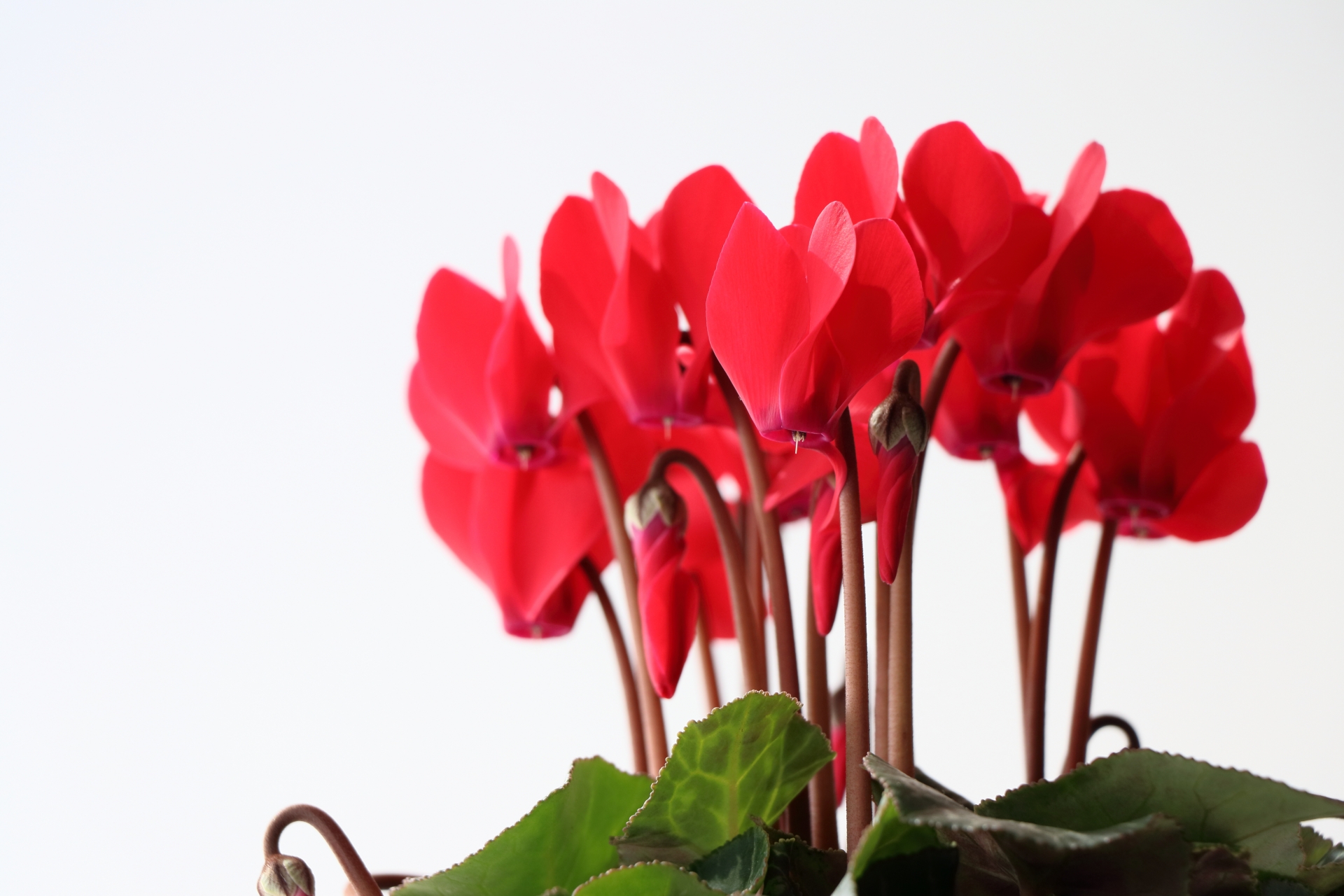





コメント Comments (click below to write in a comment)